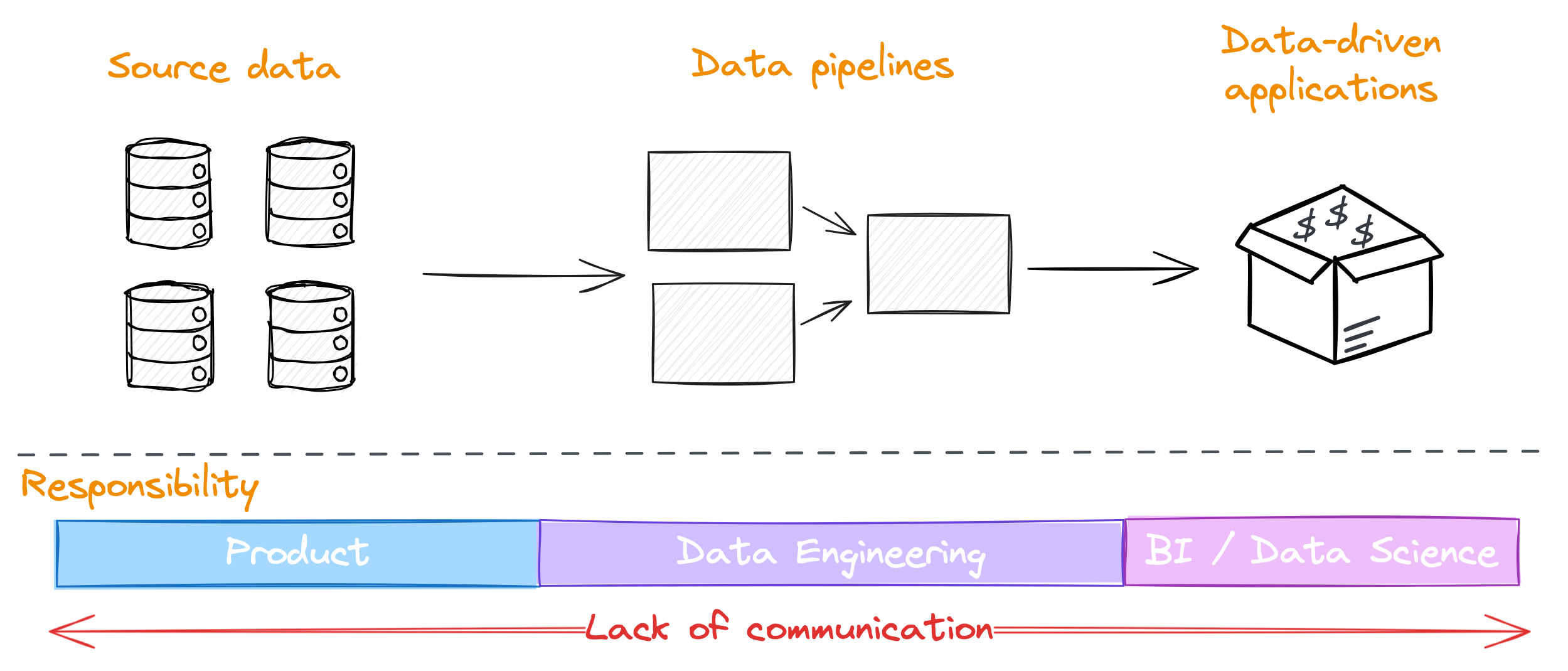Conway's law and data
Conway’s law asserts that the designs of systems are influenced by an organisation’s communication structure, suggesting that how teams are organised and communicate will reflect in the final product.
So if we apply that to data, it’s not surprising that achieving value from data is difficult when data teams are often placed in a separate part of the organisation to where the data is generated.
It makes communication between data producers and data consumers more difficult, and incentives the data teams to work around poor data quality by building complex and expensive ETL pipelines rather than try to address the problem at the source.

While it might be ideal to solve this problem by changing your organisational structure, that’s not always achievable.
But there are things we can do to work against Conway’s law.
One of those is to work hard to improve the communication across organisational barriers, through personal connections and utilising different communication channels like tech talks, newsletters, and so on.
The other is to design your data architecture so that it naturally supports the communication structures you need, encouraging the organisational structure to evolve in that direction.
That’s sometimes called Reverse Conway’s law, and I’ll talk more about how we can do that with our data architecture tomorrow.